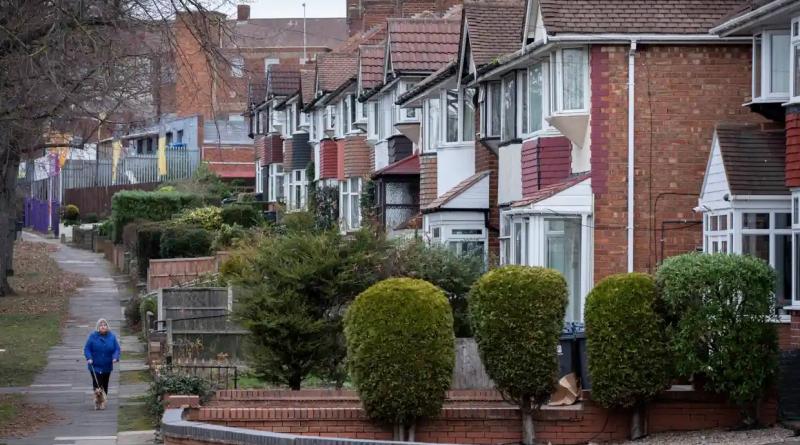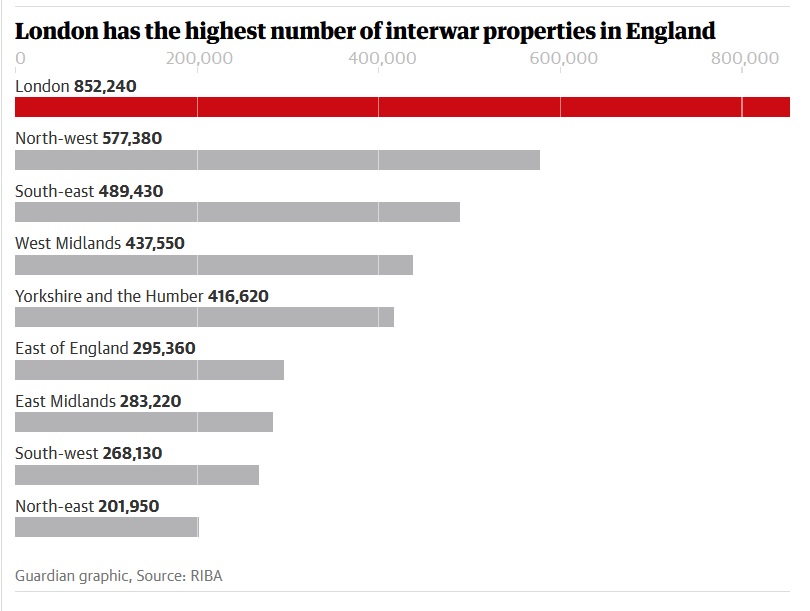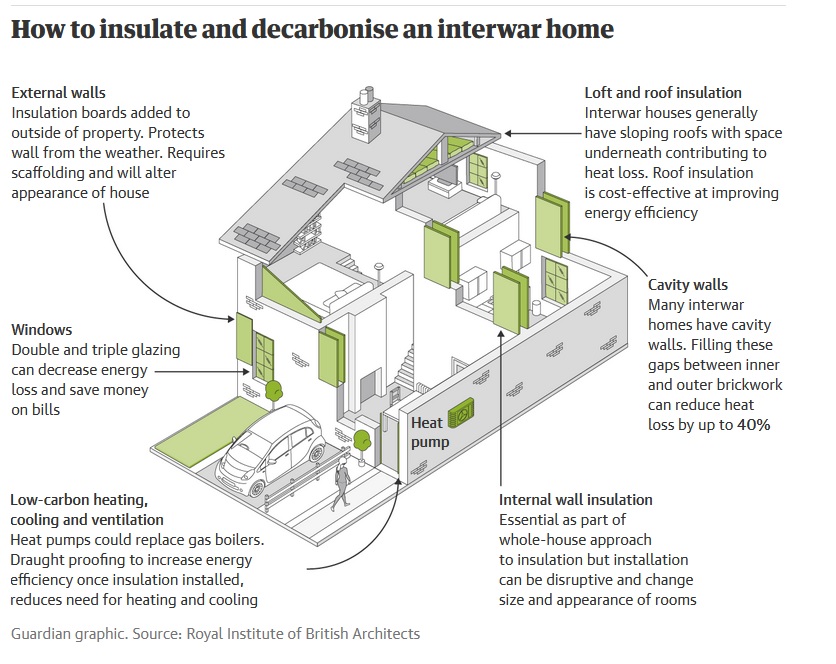Architects call for mass insulation of England’s interwar suburbs

RIBA says scheme targeting efficiency and heating of older 20th-century housing could cut emissions by 4%
From Kingstanding in Birmingham to Becontree in east London, architects are calling for England’s draughty interwar suburbs to be wrapped in insulation in a national drive to reduce carbon emissions.
The Royal Institute of British Architects (RIBA) has calculated that insulation, double- or triple-glazing and gas boiler replacement in 3.3m interwar homes that sprawl around England’s towns and cities could cut the country’s carbon emissions by 4%, helping it towards the net zero target by 2050.
The professional body is calling for a national programme and has costed the works at up to £38bn, which far exceeds current government green homes subsidies. But it believes the works could prove cheaper because the repetitive designs of the terraced and semi-detached homes should allow for economies of scale in a mass rollout. It also foresees savings of more than £500 a year in energy bills in many cases.
The RIBA is calling for policies to incentivise private owners, who own more than 70% of interwar homes, and social landlords to fund the works.
The proposal comes as householders face soaring utility prices. With a fifth of residents of poorly insulated interwar homes already in fuel poverty, they look likely to be among the worst hit. Around half of the interwar homes – those built between 1919 and 1930 – have uninsulated solid walls that are responsible for almost half of heat loss. Those built between 1930 and 1945 mostly have cavity walls, few of which have been insulated.
“There can be no further delay in embarking on a national programme of home retrofitting, which will transform UK housing, creating warm and cheaper-to-heat homes while bringing health and wider societal benefits,” said Simon Allford, the president of the RIBA. “This process will drastically reduce fuel poverty, create half a million green jobs, and positively contribute to the national levelling up agenda.”
Experts have cautioned that some measures to retrofit housing to cut carbon emissions are more cost-effective than others. Jan Rosenow, the Europe director at the Regulatory Assistance Project, a clean energy thinktank, said loft and cavity wall insulation were among measures that delivered the best “bang for buck” in terms of cutting carbon, while solid-wall insulation was less efficient. Investing the money in other carbon-cutting technologies such as renewable energy might be more cost-effective. But solid-wall insulation also makes homes more comfortable.
Rosenow also said he believed the RIBA estimates of 4% carbon savings were too optimistic.
Jess Ralston, an analyst at the Energy and Climate Intelligence Unit, said: “Efficiency is the first crucial step to limiting our [energy] demand. Once we have done that we can fill the gaps with cheaper renewables, bring out homes down to zero emissions and save money on bills.”

The RIBA’s plan coincides with a growing campaign among architects to “retrofit-first”, to reduce the carbon emissions from creating new buildings. Campaigners claimed a victory last month when the multinational bank Citigroup chose not to demolish its 42-storey skyscraper at Canary Wharf, and instead planned to retrofit it, saving 100,000 tonnes of embodied carbon.
Energy use in homes accounts for about 14% of the UK’s greenhouse gas emissions. Only 10% of interwar homes achieve an energy performance certificate (EPC) above band C. If current band D rated homes were retrofitted to achieve band C performance, households would save £511 a year under the proposed 2022 energy price cap, the RIBA said.
A higher proportion of households who live in interwar homes (17%) are fuel poor than the general population (13%), which means living in a home with an energy efficiency rating below band D or having an income below the poverty line after housing and energy bills.
Energy use in homes accounts for about 16% of England’s greenhouse gas emissions, producing a total of 58.5m tonnes of CO2 every year.
These emissions need to fall by about a quarter by 2030 from 1990 levels for the UK to meet its carbon budget, and housing is one of the only sectors where the implementation of measures to reduce emissions has stalled, the RIBA argues. Rates of installation of cavity wall, solid-wall and loft insulation all fell between 2012 and 2017.

The independent Climate Change Committee, chaired by John Gummer, the Conservative former environment secretary, has calculated that to get to net zero the UK needs to spend £55bn on improving efficiency in existing homes by 2050. It warns that buildings of all types are one of the most costly challenges across the economy but that for every £12bn spent each year there could be annual operating savings of £5bn. While some homes will require much more, close to two-thirds of homes need no more than £1,000 spent on retrofitting energy efficiency measures.
Robert Booth Social affairs correspondent
cover photo: The Kingstanding area of Birmingham. Photograph: Andrew Fox/The Guardian





